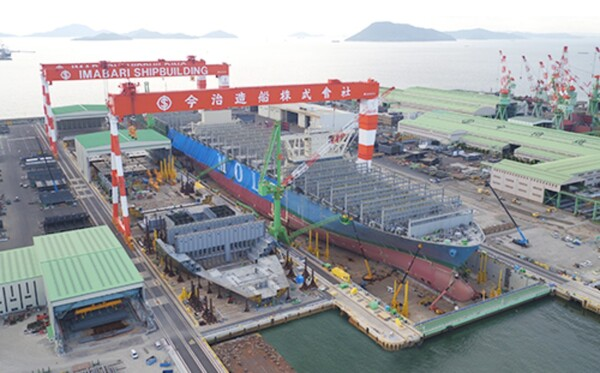The Japanese government has set a target to double its annual shipbuilding capacity by 2035 compared to 2024 levels.

According to a September 18 report by the Nikkei Asian Review, Japan’s Ministry of Land, Infrastructure, Transport and Tourism announced plans to double the annual shipbuilding capacity of Japan’s shipbuilding industry to 18 million gross tons by 2035.
The roadmap for this initiative will be released this autumn, outlining specific targets and the scale of investment from both the government and private sector. It will also clarify concrete support measures to be included in this year’s supplementary budget and next year’s main budget, while promoting collaboration between companies and investment in digital transformation (DX).
Under the Japan-U.S. tariff agreement, the shipbuilding industry has been designated as a key area for Japanese investment in the United States, drawing significant attention. Currently, both sides are exploring cooperation in fields where Japan possesses expertise, such as icebreaker technology.
Under the Japan-U.S. tariff agreement, the shipbuilding industry has been designated as a key area for Japanese investment in the United States, drawing significant attention. Currently, both sides are exploring cooperation in fields where Japan possesses expertise, such as icebreaker technology.
The global shipbuilding industry is currently dominated by China and South Korea. According to Clarksons Research, a UK-based shipbuilding and maritime industry analysis firm, China secured 70% of the global new ship order volume in 2024 with 4.64 million CGT (Compensated Gross Tonnage, 1,711 vessels), ranking first. South Korea followed with 10.98 million CGT (250 vessels), accounting for 17% of the market share and placing second.
Japan’s shipbuilding industry once held approximately 40% of the global market share in the 1990s, but its share gradually declined with the rise of China and South Korea’s shipbuilding sectors. By 2024, Japan’s actual shipbuilding capacity stood at only 9.08 million gross tons, accounting for about 13% of global capacity, marking a significant decline in the industry’s influence.
Cost issues have become the core bottleneck hindering Japan’s shipbuilding industry from achieving scale expansion and regaining competitiveness. According to analysis by Japan’s Ministry of Land, Infrastructure, Transport and Tourism, taking bulk carriers—a primary vessel type—as an example, China’s construction costs amount to only 80% of Japan’s. The Nikkei Asian Review noted: “Measures such as reducing material costs through joint procurement and controlling construction costs by improving production efficiency are becoming increasingly important.”
Furthermore, Japanese industry insiders believe the future lies in developing next-generation fuel vessels with low environmental impact. Japan’s new Land, Infrastructure, Transport and Tourism Minister Hiromasa Nakano emphasized: “Establishing a dominant position in the shipbuilding market is crucial.”


